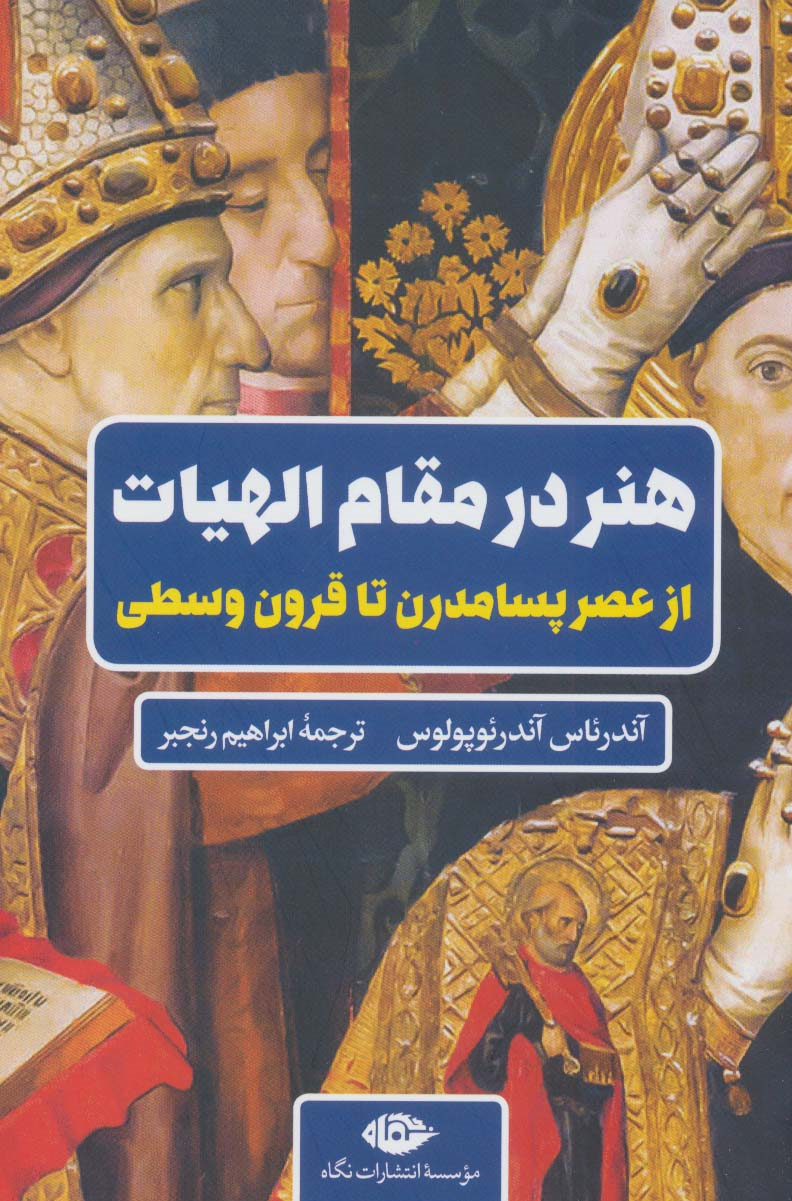From the Agora to the Middle Ages in search of the meaning of art

Fars News Agency – Art and Media Group: In modern times, “writing” and “theory” are no longer just an “attachment” to works of art, that is, they are not supposed to contrast “writing (theory, critique, analysis, etc.)” / “work of art” with each other. To excel and choose, in other words, in today’s world, the line between works of art and art theory has been blurred and one cannot be imagined without the other, which is why writing about art and art theory has an important place in the field of contemporary art. dedicated.
In this report, under the pretext of the 33rd edition of the book fair, we will take a brief look at two newly published books on what art is; “Art in the Contemporary Agora” and “Art in Theology: From the Postmodern Age to the Middle Ages”.
Art today has its roots in the cities of Polis, ancient and medieval Greece, in the golden age of ancient Greece, art had a very important place and tragedies and comedies were performed in many cities. In the police of ancient Greece, the agora (square) played a key role in the formation of works of art. The agora or squares were the places where artists performed their works. In fact, at that time, the agoras and the works of art in which they were performed bridged the gap between the government and the people. That is, normally the people were not able to convey their message to the government, but the agoras were places / spaces that allowed dialogue between the people and the government.
On the other hand, the “Middle Ages”, which is erroneously referred to as the Black Age (because in this period, very valuable religious works have been created, which are referred to as masterpieces of art history) are the source of the formation of the meaning of art in the position and It’s its current status, hence the idea of creativity rooted in the concept of melancholy, from the heart of the night school (a literary school formed in the late Middle Ages. This school believes that man has four moods: good mood, bad mood, self Possession and melancholy, and this last creation, that is, melancholy, is tied to isolation and isolation and loneliness and suffering, as well as creativity and genius. It is strange that this situation has a narrow border with madness. “Renaissance painter” Albrecht Dürer has a famous engraving of the same name; melancholy is the title of this work). From the late Middle Ages, when these struggles over what art was, to the twentieth century, and even today, the concept of art has always undergone various changes, and its meaning has always changed to the eras.
The idea of ”contemporary art” was formed in the art world from 1960 onwards. Visual art is a discipline that abandons approaches such as “representation”, “representation” and “formalism” and can be formulated based on “ideas”. Although many books on art theory and theory have been translated and written since the 1970s, what “contemporary art” has been has been debated over the years. What is contemporary and what is not contemporary has been one of the main concerns of the country’s art field in various fields. From the visual arts to theater and cinema, being “contemporary” has always been the focus of audiences and critics. Therefore, the two books introduced in this report each try to answer this question. One has a phenomenological approach and tries to take a historical look at art and reread it in different eras, and the other focuses on “what is contemporary”?
The author of the first book is Boris Grace, a philosopher, historian, and art critic specializing in aesthetics and media. He is currently a professor at Karlsruhe University of the Arts and Design and has taught at universities such as the University of Pennsylvania. Boris Gravis is a leftist philosopher who, based on the thoughts and writings of Walter Benjamin, re-evaluated the art of the Soviet era, especially social realism, and introduced a new kind of aesthetics based on Benjamin’s interpretations of the aestheticization of politics and the politicization of art. Were related. In recent years, in the Iranian artistic text, special attention has been paid to his views and thoughts, and as a result, several important texts from him have been translated into Persian. Now, at the same time as the International Book Fair, a new work by Gravis entitled “Art in the Contemporary Agora” has been published, which can be considered as the latest book published in the field of contemporary art theory and theory.
The second book is called “Art as Theology”. In 1994-1995, Andreopoulos completed his dissertation at the Faculty of Theology at Durham University under the supervision of Andrew Lutt on the subject of art in the field of theology. Collected under the title “Art as Theology: From the Postmodern Age to the Middle Ages”.
The book is divided into “Religious Attitudes Towards the History of the Arts,” “Controversy with Leonardo,” “The Death of Art in Postmodern Philosophy,” “The Religious Artist in the Times: From the Postmodern to the Middle Ages,” “Conclusions,” “Notes,” and Bibliography »has been written. Religion and spirituality are key issues in contemporary art. In the Middle Ages, art was a symbol of religion, so many works of art were created in this area, including in the form of church paintings. Art has always played an important role in the visual expression and processing of spirituality, while in the late Middle Ages art gradually lost its sacred character.
Andreas Andreopoulos explores the connection between art and religion in his plays The Ancient Jews, Greek Tragedy, the Renaissance, the Byzantine Symbol, and the Medieval Cathedral, and offers a new understanding of art.
Introducing Kata “Art in Contemporary Agora”
Since the publication of the Critique of Judgment (1790) by Immanuel Kant, the philosophy of art has practically become an aesthetic tradition, meaning that it is the audience of the work of art that should have the power and place to understand the work of art, but many used to talk about art These aesthetic concepts are related to art because this world is beautiful regardless of all traditions. The integration of the art audience with the consumer has intensified during this period to the point that the art lover has become a passive spectator who has no escape from the common stereotypes in the art market.
Of course, it was in the late nineteenth century that Nietzsche warned that it was time to see art only from the artist’s point of view. The possibility of understanding beauty without specialization means being an artist in life and has long been the rich source that has in many cases been the source of leading currents. In the Western Agora tradition, it is the place / square in the ancient city of Athens where different people gathered to talk about many concepts that were outside of their life experience, and Boris Gravis (1947) tried to find a book on art in the contemporary Agora. Create such an atmosphere.
His aim in compiling this book is to reject the aesthetic subject and to use the anti-aesthetic method in order to be able to relate to art, far from the concepts that the experts in this field have provided over the last few centuries. He considers this possibility in different seasons and constantly changes his perspective to finally acquire a new meaning of contemporary art. In other words, it is necessary to be an artist in this age and to be involved in the process of producing a work of art and to clean the field of art from the art market, as well as to use important achievements in the work of art. One of the most important questions addressed in this book is “What is contemporary art?” And then “What is contemporary?” It is because discovering the present is different for us from our predecessors, and art is the manifestation of such knowing and receiving the universe.
Introducing the book “Art as Theology”

Every new narrative of the history of art means drawing a new path because art has not had a single meaning during these thousands of years and has always, like everything else in this mortal world, changed. One of these readings is the reading of art as it contains the sacred. Archaeologists and historians of history, culture, and religion have repeatedly emphasized the presence of symbols of the sacred in the creation of the work of art. Belief of the author of the book Art in the Theology (2006) From the very beginning, that is, from the first moments of the development of art and man, man has tried to express what he can not express in the form of art, that is, art has been unspoken or sacred words from the beginning. From this perspective, art is a form of human destiny, art is everything that man does not know what to do with or what is that in the language of nature can not be expressed and left as a legacy. In the first chapter of this book, Andreopoulos explores the history of art from a religious perspective to show that the rift began when there was a contradiction between the heart and the intellect in the Western tradition, so that rationalists would think that everything that is not rational is wrong. Then, in the second chapter, the author shows the renaissance of Western art by emphasizing the social and educational functions of this art, that is, at this moment the sacred is replaced by earthly affairs to reach the death of art in the modern era because believers believe in this death. They denied sanctity and legitimized secularism, so that the protesters could finally reach out to the current with the slogan of art for art’s sake, because they still considered the sacred or theology to be beautiful under the heavy shadow of our earthly world. Religious art in recent times is the subject of the fourth chapter of the book and deals with the role of this art in an era that has many claims. However, although the meaning and form of art has changed a lot throughout history, what keeps it alive is the eternal return that it experiences every time after death.
In an excerpt from the book, we read: “Man chose image and music to say his unspoken things. In the text of the Bible and in the incident of the Tower of Babel, a psychological wound was inflicted on the soul of a person who will always be with him, that is, the suffering caused by the temptation and inability to say what he avoids. The inherent lack of speech in the field of art created an independent existence for itself, and this is why art is no longer merely industrial and has become an opportunity to express the unspeakable. “Art is the source of the unspeakable, the place where words can not go.”
End of message /
You can edit this post
Suggest this for the front page

